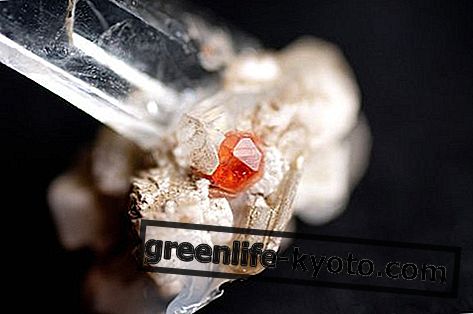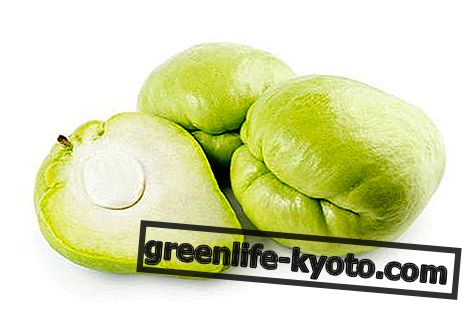Laurel ( Laurus nobilis ) is a plant of the Lauraceae family . Useful for stomach and colic disorders, it is used to treat fever and cough. Let's find out better.

Laurel property
The leaves and the berries of laurel contain in different percentage an essential oil , (the first ones contain from 1 to 3% of essential oil, while the second ones up to 10%), consisting of geraniol, cineol, eugenol, terpineol, fellandrene, eucalyptol, pinene, with aperitif properties, ie stimulating appetite, digestive and carminative. For this reason, laurel is commonly used to relieve colic and stomach disorders; promote digestion; and to help expel gas from the gastro-intestinal tract, in the presence of meteorism or aero.
Both the leaves and the berries exert a diaphoretic action, useful for stimulating sweating, in case of fever and flu states; and expectorant, indicated to eliminate bronchial catarrh and in case of cough.
In external use, fresh berries are used to prepare laurel oil, or laurin oil, with an anti - inflammatory, haemostatic and astringent effect, extremely effective for soothing rheumatism, arthritis, muscle pain or to facilitate the use of joints after plaster casts, against various types of trauma, bruising and bruising.
Finally the lauric acid contained in the leaves, possesses natural repellent properties against insects and parasites.
Method of use
INTERNAL USE
- ALLURIAN POWDER: 1/2 teaspoon of powder, in 1 teaspoon of honey
Crush a handful of perfectly dried berries in a wooden mortar or, better, stone, until they are pulverized, then place in an airtight glass jar. The powder thus obtained is an effective remedy against the flu, the cold cough, fever .
- INFUSION: 3-5 bay leaves, 1 cup of water a
Pour the bay leaf into boiling water and turn off the heat. Cover and leave to infuse for 10 min. Filter the infusion and drink the infusion to promote digestion, especially for those with fermentation problems, it helps in cases of loss of appetite, fights stomach pains and flu .
You can learn more about foods to fight the flu

EXTERNAL USE
BODY OIL: 50 gr. of bay berry powder, 250 ml. of olive oil
Put the powder in a glass jar with an airtight lid, pour in the olive oil and close the jar, taking care to keep it warm, near the stove or heater for 30 days, shaking it every day. Afterwards, not everything is filtered, but just enough for immediate use, and the rest is left in the container, so that the powder continues to transmit the liposoluble active ingredients to the oil. Its use is indicated to perform beneficial massages or compresses on bruises, sprains, rheumatic, joint and muscular pains.
It can also be spread on the chest and back, for acute bronchitis and coughing attacks.
A few drops of laurel oil and a handful of leaves in the water make it possible to obtain a scented and revitalizing bath, beneficial in states of fatigue of nervous origin and headache.
Contraindications
There are no particular contraindications in the use and intake of laurel and its essential oil. Continuous use can cause contact dermatitis in predisposed subjects.
Description of the plant
Bushy shrub, or evergreen tree, with erect stem and blackish green bark, common in the Mediterranean areas where it arises spontaneously. The ovate leaves are dark green, leathery and very fragrant; the upper page is glossy with an intense green color, the lower one is opaque. Laurel is a dioecious plant, that is, there are male and female specimens. The light yellow flowers are joined together to form an umbrella-shaped inflorescence and appear in spring. The fruits are black and shiny drupes (when ripe) with a single seed.
The laurel habitat
Widespread along the northern coastal areas of the Mediterranean Sea, from Spain to Greece and Asia Minor, in Italy it grows spontaneously in the central-southern areas and along the coasts: while it is cultivated in the northern regions.
Background
The Greeks thought that its leaves had the power to transmit the gift of divination, to ward off bad luck and contagious diseases . In Delphi, home of the oracle of Apollo, the priests of the god and the pythia chewed or burned Laurel leaves to establish communication with the Gods and slept on "mattresses" made of layers of its twigs, to favor premonitory dreams .
In the myth told by Ovid in his Metamorphoses, the nymph Daphne, whose name means " laurel " (laurel), was the first love of the god Apollo . The young woman, to escape the courtship of the god, had herself transformed by her mother Gaea, into a laurel plant. The god, now powerless, decided to honor this plant making it evergreen and make it sacred to him. From that moment on, men would have used it as a symbol of glory, to be placed on the head of the best, heroes, geniuses and wise men, capable of exciting enterprises.
Also in Rome it was considered the sign of triumph, so much so that the victorious generals wore a crown made with its fronds, when they were celebrated on the Capitol. It is said, in fact, that it was Jove himself who gave it to Caesar to celebrate the emperor's victories.
For a long time Lauro was used as a remedy against the plague, while, in the Middle Ages, bay leaves were considered a natural remedy suitable for regularizing the menstrual cycle.
With the laurel oil it is prepared Aleppo soap, typical of Syria and more precisely of the city of Aleppo, from which it takes its name, particularly suitable for delicate skin and those suffering from allergies and intolerances to perfumes and other additives, commonly present in personal hygiene cleaners.
The diffusion and the wide use that is made of it in the Sicilian Cuisine have led the laurel to be included in the list of traditional Italian food products (PAT), and by the Ministry of Agricultural, Food and Forestry Policies (Mipaaf) as a typical Sicilian product .
Other articles on laurel:
> Laurel oil among natural facial cleansers
> Aleppo soap made with laurel oil
> Powerful tarmicidal laurel
In collaboration with Erboristeria del Pigneto













